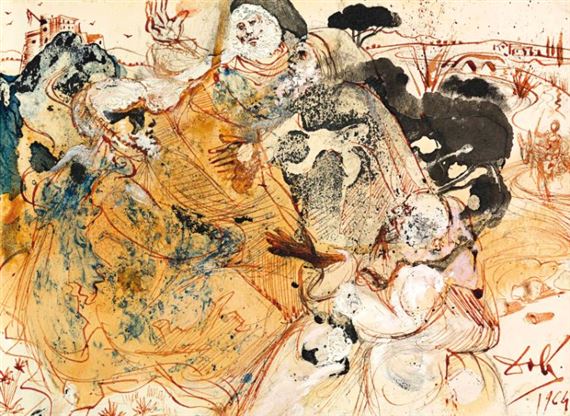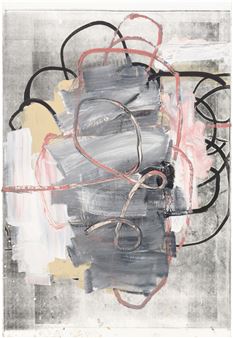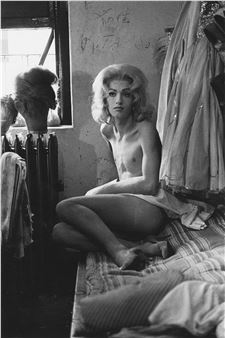Salvador DalГӯ: Drawings
Huxley-Parlour Gallery is pleased to announce an exhibition of works on paper by renowned artist Salvador DalГӯ. Presenting seventeen works, including preparatory studies and Surrealist sketches, the exhibition will highlight the artistвҖҷs exemplary draughtsmanship.
The seventeen drawings on display, made between 1930 and 1981, span the majority of DalГӯвҖҷs artistic career. The exhibition reveals the central role that drawing played in the artistвҖҷs oeuvre. The works themselves give a fascinating insight into the imaginative world of the great SurrealistвҖҷs mind, and reveal his interest in eroticism, optics and architecture.
Drawing was a medium of particular importance to DalГӯ and the Surrealists and became one of the predominant means of expression and innovation amongst the Surrealist group in the first half of the twentieth century. Highlights in the exhibition include loose figure studies and sketches of dreamlike landscapes rendered in pencil and ink on paper, as well as completed drawings including an illustration from Don Quixote and a large watercolour, Vision of the Atomic Age, made in 1948, which reveals the artistвҖҷs preoccupation with natural sciences as well as nuclear physics. Inspired by the shock of Hiroshima and the advent of the atomic age, in the late 1940s DalГӯ sought to synthesise Christian iconography with images of material disintegration.
Salvador DalГӯ was born in 1904 in Figueres, Spain. DalГӯ began working in the Surrealist style in the 1920s in Paris. This aesthetic would remain at the forefront of his work for the rest of his career and across his multi-faceted artistic output, in which he explored film, photography, drawing, painting and theatre design. DalГӯ described his process as the вҖҳparanoic-critical methodвҖҷ in which he used the subconscious to achieve greater artistic creativity. His approach was heavily influenced by the psychoanalytic theories of Sigmund Freud, who he met in 1938, and who would be the overwhelming influence on his art over the first half of his career. During the late 1920s and early 1930s, DalГӯ produced some of the most important works of Surrealism including The Persistence of Memory (1931) and his collaborations with Luis BuГұuel, Un Chien Andalou (1929) and LвҖҷГӮge dвҖҷOr (1930).
DalГӯвҖҷs prolific artistic output throughout his career, including over 1,500 paintings as well as illustrations, drawings, theatre sets, costumes, sculptures and films have made him one of the most significant artists of the twentieth century. His work is held in many major international cultural institutions including Tate, Museo Nacional Centro de Arte Reina SofГӯa, Madrid and the Museum of Modern Art, New York.

Recommended for you
Huxley-Parlour Gallery is pleased to announce an exhibition of works on paper by renowned artist Salvador DalГӯ. Presenting seventeen works, including preparatory studies and Surrealist sketches, the exhibition will highlight the artistвҖҷs exemplary draughtsmanship.
The seventeen drawings on display, made between 1930 and 1981, span the majority of DalГӯвҖҷs artistic career. The exhibition reveals the central role that drawing played in the artistвҖҷs oeuvre. The works themselves give a fascinating insight into the imaginative world of the great SurrealistвҖҷs mind, and reveal his interest in eroticism, optics and architecture.
Drawing was a medium of particular importance to DalГӯ and the Surrealists and became one of the predominant means of expression and innovation amongst the Surrealist group in the first half of the twentieth century. Highlights in the exhibition include loose figure studies and sketches of dreamlike landscapes rendered in pencil and ink on paper, as well as completed drawings including an illustration from Don Quixote and a large watercolour, Vision of the Atomic Age, made in 1948, which reveals the artistвҖҷs preoccupation with natural sciences as well as nuclear physics. Inspired by the shock of Hiroshima and the advent of the atomic age, in the late 1940s DalГӯ sought to synthesise Christian iconography with images of material disintegration.
Salvador DalГӯ was born in 1904 in Figueres, Spain. DalГӯ began working in the Surrealist style in the 1920s in Paris. This aesthetic would remain at the forefront of his work for the rest of his career and across his multi-faceted artistic output, in which he explored film, photography, drawing, painting and theatre design. DalГӯ described his process as the вҖҳparanoic-critical methodвҖҷ in which he used the subconscious to achieve greater artistic creativity. His approach was heavily influenced by the psychoanalytic theories of Sigmund Freud, who he met in 1938, and who would be the overwhelming influence on his art over the first half of his career. During the late 1920s and early 1930s, DalГӯ produced some of the most important works of Surrealism including The Persistence of Memory (1931) and his collaborations with Luis BuГұuel, Un Chien Andalou (1929) and LвҖҷГӮge dвҖҷOr (1930).
DalГӯвҖҷs prolific artistic output throughout his career, including over 1,500 paintings as well as illustrations, drawings, theatre sets, costumes, sculptures and films have made him one of the most significant artists of the twentieth century. His work is held in many major international cultural institutions including Tate, Museo Nacional Centro de Arte Reina SofГӯa, Madrid and the Museum of Modern Art, New York.

 ARTISTS
ARTISTS















